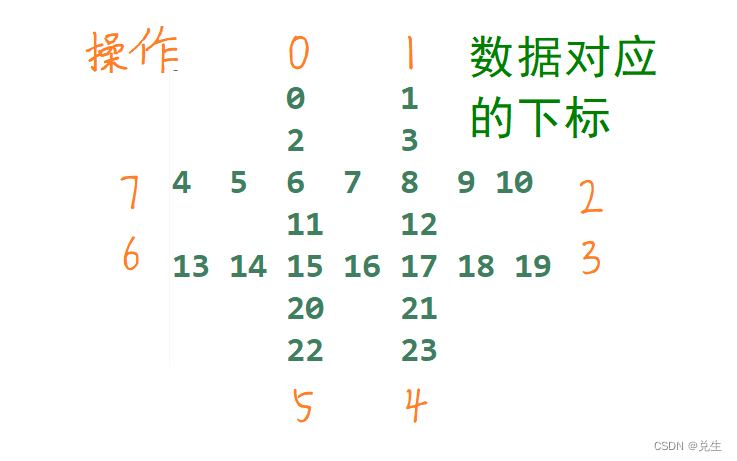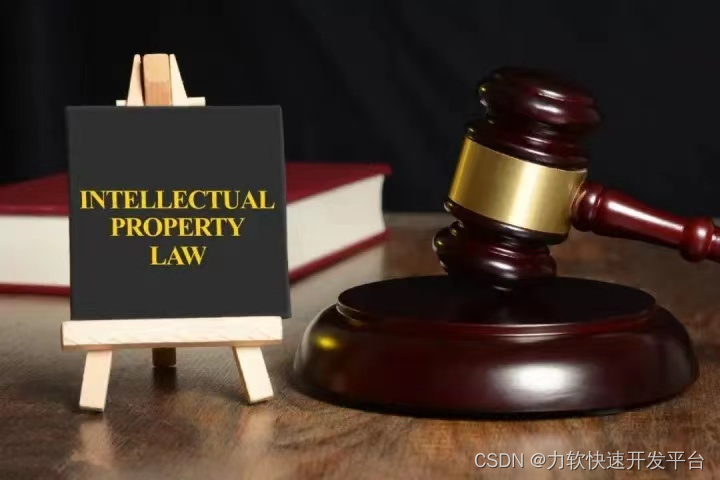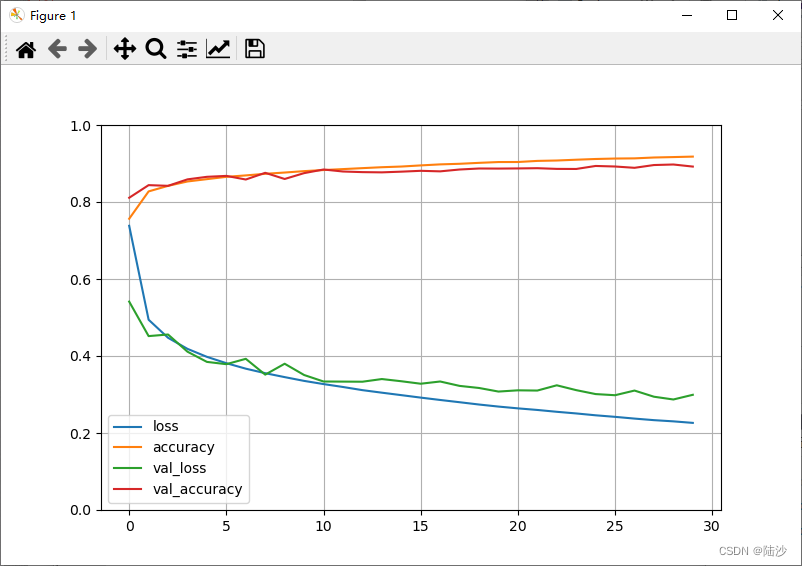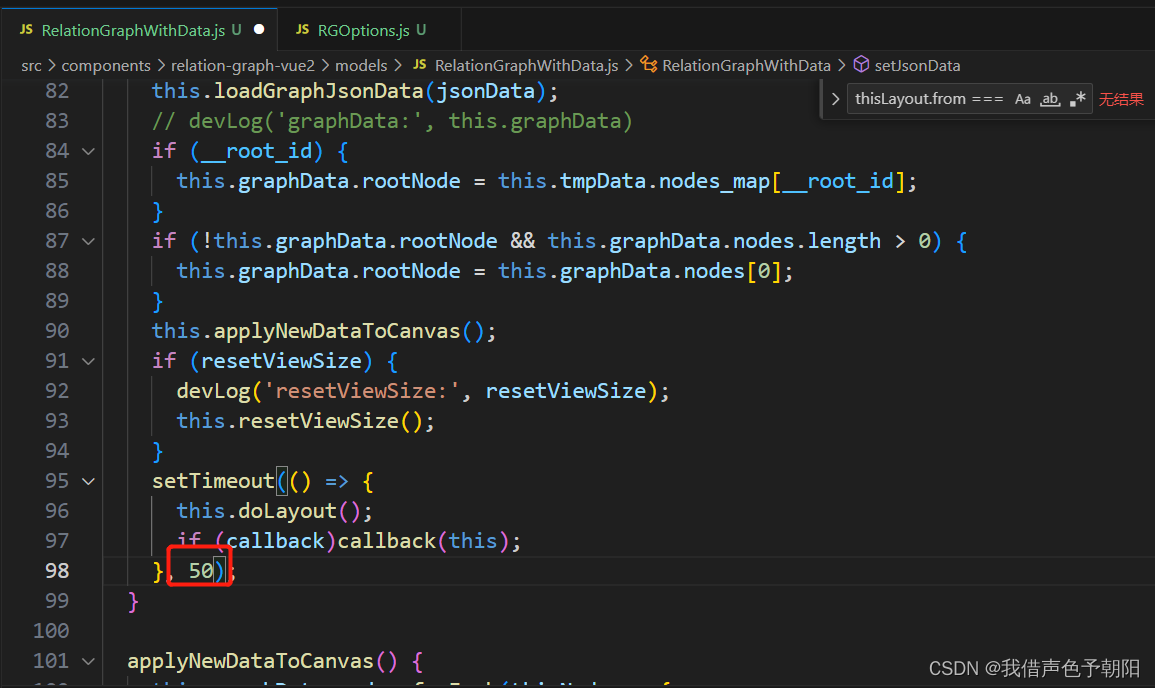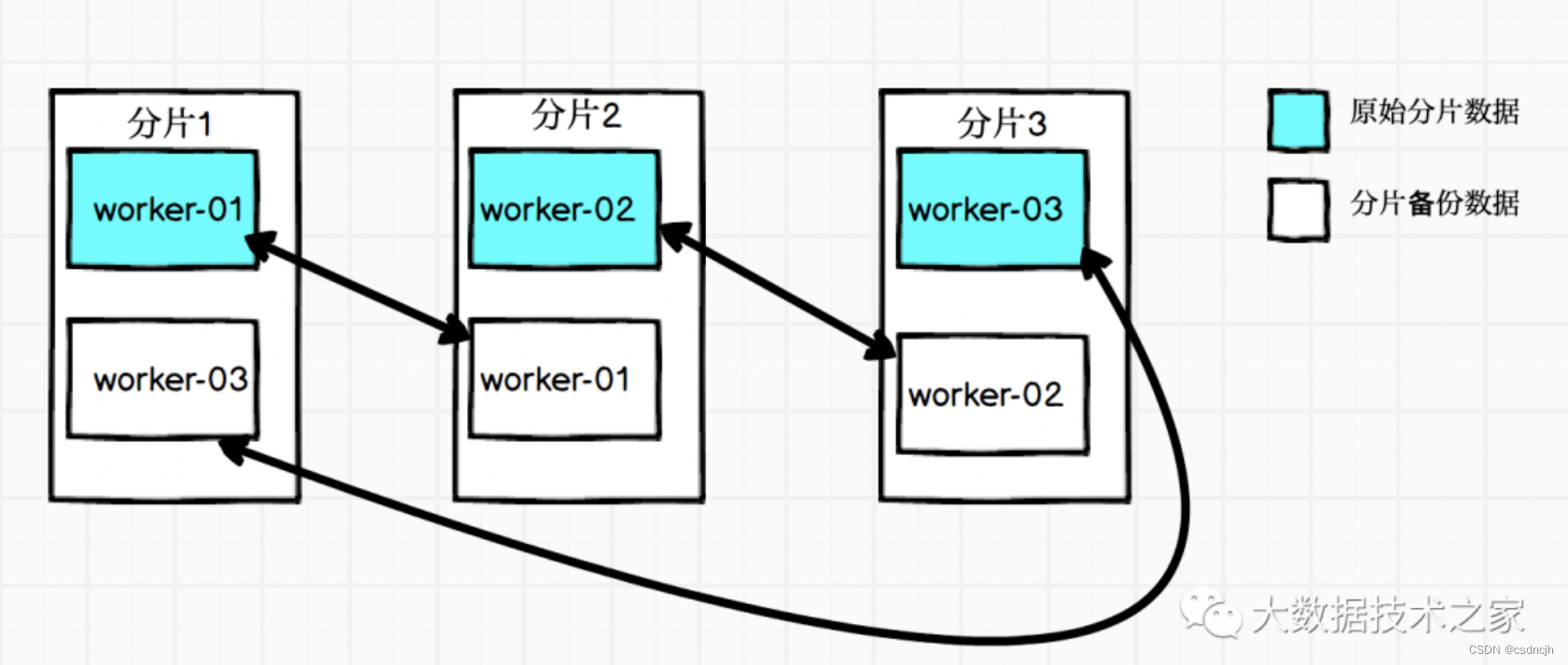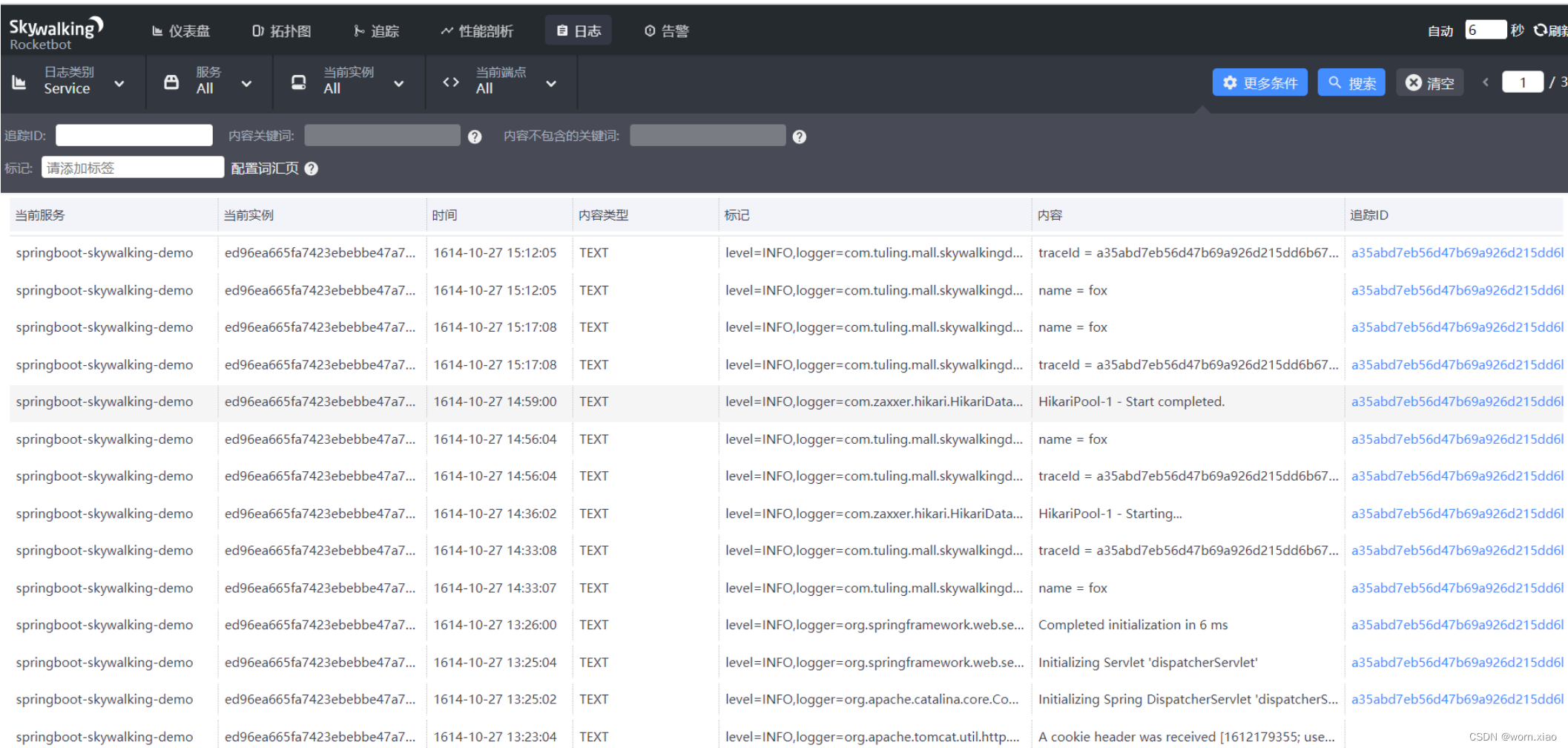Diffusion Models
Links: https://theaisummer.com/diffusion-models/
Markovian Hierachical VAE
rvs:
- data: x 0 x_{0} x0,
- representation: x T x_{T} xT
(
p
(
x
0
,
x
1
,
⋯
,
x
T
)
,
q
(
x
1
,
⋯
,
x
T
∣
x
0
)
)
(p(x_0,x_1,\cdots,x_T),q(x_1,\cdots,x_{T}|x_0))
(p(x0,x1,⋯,xT),q(x1,⋯,xT∣x0))
where
x
1
,
⋯
,
x
T
x_1,\cdots,x_T
x1,⋯,xT is unobservable, and
- generative model/backward trajectory:
p ( x 0 , x 1 , ⋯ , x T ) = p ( x T ) ∏ t p ( x t − 1 ∣ x t ) p(x_0,x_1,\cdots,x_T)=p(x_T)\prod_tp(x_{t-1}|x_{t}) p(x0,x1,⋯,xT)=p(xT)t∏p(xt−1∣xt) - forward trajectory(Markov process):
q ( x 1 , ⋯ , x T ∣ x 0 ) ) = ∏ t q ( x t ∣ x t − 1 ) q(x_1,\cdots,x_{T}|x_0))=\prod_tq(x_{t}|x_{t-1}) q(x1,⋯,xT∣x0))=t∏q(xt∣xt−1)
E L B O : = ∫ q ( x T ∣ x 0 ) log p ( x T ) q ( x T ∣ x 0 ) d x T + ∑ t = 2 T ∫ q ( x t − 1 , x t ∣ x 0 ) log p ( x t − 1 ∣ x t ) q ( x t − 1 ∣ x t , x 0 ) d x t − 1 x t + ∫ q ( x 1 ∣ x 0 ) log p ( x 1 ∣ x 0 ) d x 1 ELBO:=\int q(x_{T}|x_{0}) \log \frac{p(x_{T})}{q(x_{T}|x_{0})}\mathrm{d}x_{T}\\ +\sum_{t=2}^T \int q(x_{t-1},x_{t}|x_{0})\log \frac{p(x_{t-1}|x_{t})}{q(x_{t-1}|x_{t}, x_{0})}\mathrm{d}x_{t-1}x_{t}\\+\int q(x_{1}|x_{0})\log p(x_{1}|x_{0})\mathrm{d}x_{1} ELBO:=∫q(xT∣x0)logq(xT∣x0)p(xT)dxT+t=2∑T∫q(xt−1,xt∣x0)logq(xt−1∣xt,x0)p(xt−1∣xt)dxt−1xt+∫q(x1∣x0)logp(x1∣x0)dx1
Loss
L o s s : = − E L B O = D K L ( q ( x T ∣ x 0 ) ∥ p ( x T ) ) + ∑ t = 2 T ∫ q ( x t ∣ x 0 ) d x t D K L ( q ( x t − 1 ∣ x t , x 0 ) ∥ p ( x t − 1 ∣ x t ) ) − ∫ q ( x 1 ∣ x 0 ) log p ( x 1 ∣ x 0 ) d x 1 Loss:=-ELBO= D_{KL} (q(x_{T}|x_{0})\| p(x_{T}))\\ +\sum_{t=2}^T \int q(x_{t}|x_{0})\mathrm{d}x_{t}D_{KL}(q(x_{t-1}|x_{t}, x_{0})\|p(x_{t-1}|x_{t}))\\-\int q(x_{1}|x_{0})\log p(x_{1}|x_{0})\mathrm{d}x_{1} Loss:=−ELBO=DKL(q(xT∣x0)∥p(xT))+t=2∑T∫q(xt∣x0)dxtDKL(q(xt−1∣xt,x0)∥p(xt−1∣xt))−∫q(x1∣x0)logp(x1∣x0)dx1
- prior matching term
- denoising matching term
- reconstruction term
Diffusion Models
basic assumption
- tractable distr: p ( x T ) p(x_{T}) p(xT)
- forward trajectory(Markov process): q ( x t ∣ x t − 1 ) q(x_{t}|x_{t-1}) q(xt∣xt−1) is fixed (has no unlearned parameter)
Definition(Diffusion Model)
- tractable distr: p ( x T ) ∼ N ( 0 , 1 ) p(x_{T})\sim N(0,1) p(xT)∼N(0,1)
- generative model/backward trajectory: p ( x t − 1 ∣ x t ) ∼ N ( μ ( t ) , Σ ( t ) ) p(x_{t-1}|x_{t})\sim N(\mu(t),\Sigma(t)) p(xt−1∣xt)∼N(μ(t),Σ(t))
- forward trajectory(Gaussian diffusion): q ( x t ∣ x t − 1 ) ∼ N ( x t − 1 1 − β t , β t ) q(x_{t}|x_{t-1})\sim N(x_{t-1}\sqrt{1-\beta_t},\beta_t) q(xt∣xt−1)∼N(xt−11−βt,βt),
Parameters:
- β t = 1 − α t \beta_t=1-\alpha_t βt=1−αt or α ˉ t : = ∏ t α t \bar{\alpha}_t:=\prod_t\alpha_t αˉt:=∏tαt: noise schedule, where α t \alpha_t αt is small
- α ˉ t \sqrt{\bar{\alpha}_t} αˉt: signal rate

Fact.
- q ( x t ∣ x 0 ) ∼ N ( x 0 α ˉ t , 1 − α ˉ t ) q(x_{t}|x_{0})\sim N(x_{0}\sqrt{\bar{\alpha}_t},1-\bar{\alpha}_t) q(xt∣x0)∼N(x0αˉt,1−αˉt)
-
q
(
x
t
−
1
∣
x
t
,
x
0
)
∼
N
(
μ
q
(
x
t
,
x
0
)
,
σ
2
(
t
)
)
q(x_{t-1}|x_{t},x_{0})\sim N(\mu_q(x_t ,x_0),\sigma^2(t))
q(xt−1∣xt,x0)∼N(μq(xt,x0),σ2(t)) where
μ q ( x t , x 0 ) : = α t ( 1 − α ˉ t − 1 ) x t − α ˉ t − 1 ( 1 − α t ) x 0 1 − α ˉ t = 1 α t x t − β t 1 − α ˉ t α t ϵ 0 \mu_q(x_t,x_0):=\frac{\sqrt{\alpha_t}(1-\bar\alpha_{t-1})x_t-\sqrt{\bar\alpha_{t-1}}(1-\alpha_{t})x_0}{1-\bar\alpha_t}\\ =\frac{1}{\sqrt{\alpha_t}}x_t-\frac{\beta_t}{\sqrt{1-\bar\alpha_t}\sqrt{\alpha_t}}\epsilon_0 μq(xt,x0):=1−αˉtαt(1−αˉt−1)xt−αˉt−1(1−αt)x0=αt1xt−1−αˉtαtβtϵ0
and σ 2 ( t ) : = 1 − α ˉ t − 1 1 − α ˉ t β t \sigma^2(t):=\frac{1-\bar\alpha_{t-1}}{1-\bar\alpha_t}\beta_{t} σ2(t):=1−αˉt1−αˉt−1βt.
Design I:
p
(
x
t
−
1
∣
x
t
)
∼
N
(
μ
(
t
)
,
Σ
(
t
)
)
p(x_{t-1}|x_{t})\sim N(\mu(t),\Sigma(t))
p(xt−1∣xt)∼N(μ(t),Σ(t)):
μ
(
t
)
=
α
t
(
1
−
α
ˉ
t
−
1
)
x
t
−
β
t
α
ˉ
t
−
1
x
^
(
x
t
,
t
)
1
−
α
ˉ
t
Σ
(
t
)
=
σ
2
(
t
)
\mu(t)=\frac{\sqrt{\alpha_t}(1-\bar\alpha_{t-1})x_t-\beta_{t}\sqrt{\bar\alpha_{t-1}}\hat{x}(x_t,t)}{1-\bar\alpha_t}\\ \Sigma(t)=\sigma^2(t)
μ(t)=1−αˉtαt(1−αˉt−1)xt−βtαˉt−1x^(xt,t)Σ(t)=σ2(t)
Design II:
p
(
x
t
−
1
∣
x
t
)
∼
N
(
μ
(
t
)
,
Σ
(
t
)
)
p(x_{t-1}|x_{t})\sim N(\mu(t),\Sigma(t))
p(xt−1∣xt)∼N(μ(t),Σ(t)):
μ
(
t
)
=
1
α
t
x
t
−
β
t
1
−
α
ˉ
t
α
t
ϵ
^
(
x
t
,
t
)
Σ
(
t
)
=
σ
2
(
t
)
\mu(t)=\frac{1}{\sqrt{\alpha_t}}x_t-\frac{\beta_t}{\sqrt{1-\bar\alpha_t}\sqrt{\alpha_t}}\hat{\epsilon}(x_t,t)\\ \Sigma(t)=\sigma^2(t)
μ(t)=αt1xt−1−αˉtαtβtϵ^(xt,t)Σ(t)=σ2(t)
Fact.
Under the design I:
D
K
L
(
q
(
x
t
−
1
∣
x
t
,
x
0
)
∥
p
θ
(
x
t
−
1
∣
x
t
)
)
=
1
2
σ
t
2
(
1
−
α
ˉ
t
−
1
)
β
t
2
(
1
−
α
ˉ
t
)
2
∥
x
^
(
x
t
,
t
)
−
x
0
∥
2
=
1
2
(
1
1
−
α
ˉ
t
−
1
−
1
1
−
α
ˉ
t
)
∥
x
^
(
x
t
,
t
)
−
x
0
∥
2
D_{KL} (q(x_{t−1}|x_t , x_0) \| p_θ (x_{t−1} |x_t))=\frac{1}{2\sigma_t^2}\frac{(1-\bar{\alpha}_{t-1})\beta_t^2}{(1-\bar{\alpha}_{t})^2}\|\hat{x}(x_t,t)-x_0\|^2\\ =\frac{1}{2}(\frac{1}{1-\bar{\alpha}_{t-1}}-\frac{1}{1-\bar{\alpha}_{t}})\|\hat{x}(x_t,t)-x_0\|^2
DKL(q(xt−1∣xt,x0)∥pθ(xt−1∣xt))=2σt21(1−αˉt)2(1−αˉt−1)βt2∥x^(xt,t)−x0∥2=21(1−αˉt−11−1−αˉt1)∥x^(xt,t)−x0∥2
Under the design II:
D
K
L
(
q
(
x
t
−
1
∣
x
t
,
x
0
)
∥
p
θ
(
x
t
−
1
∣
x
t
)
)
=
1
2
σ
t
2
β
t
2
(
1
−
α
ˉ
t
)
α
t
2
∥
ϵ
^
(
x
t
,
t
)
−
ϵ
0
∥
2
D_{KL} (q(x_{t−1}|x_t , x_0) \| p_θ (x_{t−1} |x_t))=\frac{1}{2\sigma_t^2}\frac{\beta_t^2}{(1-\bar{\alpha}_{t})\alpha_t^2}\|\hat{\epsilon}(x_t,t)-\epsilon_0\|^2
DKL(q(xt−1∣xt,x0)∥pθ(xt−1∣xt))=2σt21(1−αˉt)αt2βt2∥ϵ^(xt,t)−ϵ0∥2
Algorithm
Loss:
L
=
∑
t
L
t
L
t
≈
∑
ϵ
∼
N
(
0
,
1
)
∥
ϵ
−
ϵ
^
(
x
t
,
t
)
∥
2
,
(
0
≤
t
<
T
)
L=\sum_t L_t\\ L_t\approx \sum_{\epsilon\sim N(0,1)}\|\epsilon-\hat{\epsilon}(x_{t},t)\|^2,(0\leq t<T)
L=t∑LtLt≈ϵ∼N(0,1)∑∥ϵ−ϵ^(xt,t)∥2,(0≤t<T)
where
x
t
:
=
α
ˉ
t
x
0
+
1
−
α
ˉ
t
ϵ
x_{t}:=\sqrt{\bar{\alpha}_t} x_0 + \sqrt{1-\bar{\alpha}_t}\epsilon
xt:=αˉtx0+1−αˉtϵ.
train NN ϵ ^ \hat\epsilon ϵ^ by data { ( ϵ ^ ( x t ( x 0 , i , ϵ i l ) , t ) , ϵ i l ) , ϵ i l ∼ N ( 0 , 1 ) , l = 1 , ⋯ , L } \{(\hat{\epsilon}(x_{t}(x_{0,i},\epsilon_{il}),t),\epsilon_{il}),\epsilon_{il}\sim N(0,1),l=1,\cdots, L\} {(ϵ^(xt(x0,i,ϵil),t),ϵil),ϵil∼N(0,1),l=1,⋯,L} with size of N L NL NL for each t t t。
Exercise
- Given a latent variable model
p
(
x
,
z
)
p(x,z)
p(x,z) with variational distr.
q
(
z
∣
x
)
q(z|x)
q(z∣x).
q
(
x
)
q(x)
q(x) represents data distr. and let
q
(
x
,
z
)
=
q
(
z
∣
x
)
q
(
x
)
q(x,z)=q(z|x)q(x)
q(x,z)=q(z∣x)q(x).
∫ q ( x ) L x = ∫ q ( x , z ) log p ( x , z ) q ( z ∣ x ) ∼ D K L ( q ( x , z ) ∥ p ( x , z ) ) \int q(x)L_x=\int q(x,z)\log\frac{p(x,z)}{q(z|x)}\sim D_{KL}(q(x,z)\|p(x,z)) ∫q(x)Lx=∫q(x,z)logq(z∣x)p(x,z)∼DKL(q(x,z)∥p(x,z))
where L x L_x Lx is LEBO.
References
- Jonathan Ho, Ajay Jain, Pieter Abbeel. Denoising Diffusion Probabilistic Models, 2020.
- Calvin Luo, Understanding Diffusion Models: A Unified Perspective, 2022
